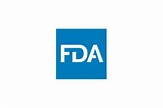Food Safety
The Wonderful World of Food Safety
It’s important to make sure the food you eat is healthy, but it’s even more important to ensure that the food you eat is safe. Most of the time, foodborne illnesses cause inconvenience and minor flu-like symptoms but they can also cause hospitalization, long-term health complication, or even death. Here is some helpful information along with some easy kitchen tips to prevent you and your family from contracting a foodborne illness.
Types of Foodborne Illnesses
Infection vs. Intoxication
A foodborne infection happens when the actual pathogenic bacteria is ingested. The bacteria then grow inside our intestine and make us sick. Foodborne infections can take days to develop depending on how much bacteria were present in the food. A few examples of bacteria that cause foodborne infections include Salmonella and pathogenic strains of Escherichia coli (E. coli).
Some bacteria produce toxins in foods that have not been held at the right temperatures. Foodborne intoxication occurs when these toxin containing foods are later consumed. Foodborne intoxication can make people sick within hours after consuming the toxin. An example of bacteria that produces these types of toxins is Staphylococcus aureus (Staph). The type of toxin produced by S. aureus is heat stable so re-heating the food will not destroy it.
Kitchen Tips
Wash Your Hands
The first step to preventing foodborne illness is to wash your hands with soap before doing any food prep or cooking and after handling raw foods like chicken, pork, or beef. Dirty or contaminated hands are one of the fastest ways to introduce bacteria into your food or spread it from one food to another.
Prevent Cross Contamination
Cross contamination occurs when bacteria is transferred from one food to another. This causes problems when bacteria on raw meats that are going to be cooked are transferred to foods that are not going to be cooked. Any bacteria on the raw meats will be destroyed during the cooking process if they are cooked to the proper internal temperature, however, any of the bacteria that was transferred to foods that will not be cooked will start to grow and multiply. Bacteria can be transferred by our hands, physical contact between foods, or by the utensils or containers used to cut, mix, or contain the food. Washing utensils, hands, and cutting boards in between food items should also be done to prevent cross contamination. Color coded cutting boards can also be purchased and used for inpidually preparing each type of food(meat, dairy, vegetables, grains, etc.)
Click here for more cross contamination prevention tips and suggestions.
Cook Your Food
Purchase a tip sensitive digital thermometer to help you easily tell if the food is done or not. Click here for a list of correct cooking temperatures for different types of foods. After the food is cooked to the correct temperature, it needs to be kept at the correct temperature. The food safety danger zone ranges from 41oF to 135oF. This temperature range represents the temperatures at which most bacteria will grow. The idea is to keep cold food at temperatures below 41oF and to keep hot food at temperatures above 135oF.
Can’t keep your food hot or cold because you’re having an outdoor activity or picnic? In these situations, instead of controlling temperature, you can control the time that the food is exposed to these temperatures. Food that is intended to be cold can be kept without temperature control for up to six hours after removing it from the fridge (<41 oF). However, the temperature of the food should not exceed 70oF and any food left in these conditions should be thrown out afterwards and not saved for leftovers. Hot foods can be served without temperature control for up to four hours but any of the leftover hot food should also be discarded.
Recall Information
Click the Food and Drug Administration logo to go to FDA's website. Here you will find updated recall information that can be used to determine what foods and product batches are being affected by recalls. If you have purchased a food being recalled, it can be returned to the store you purchased it from.
More on Food Safety
- Food Safety for Holiday Meals
- Food Safety and Disasters
- Keeping Young Children Safe From Food Poisoning
- A Consumer's Guide to Food Safety Risks
- K-State Extension Food Safety
- At Home Safe Food Handling: It's in Your Hands
- Food Safety for Boomers and Beyond
- Food Safety and Sanitation: Guidelines for Volunteer Group Social Functions
- Safe Homemade Ice Cream Recipe
